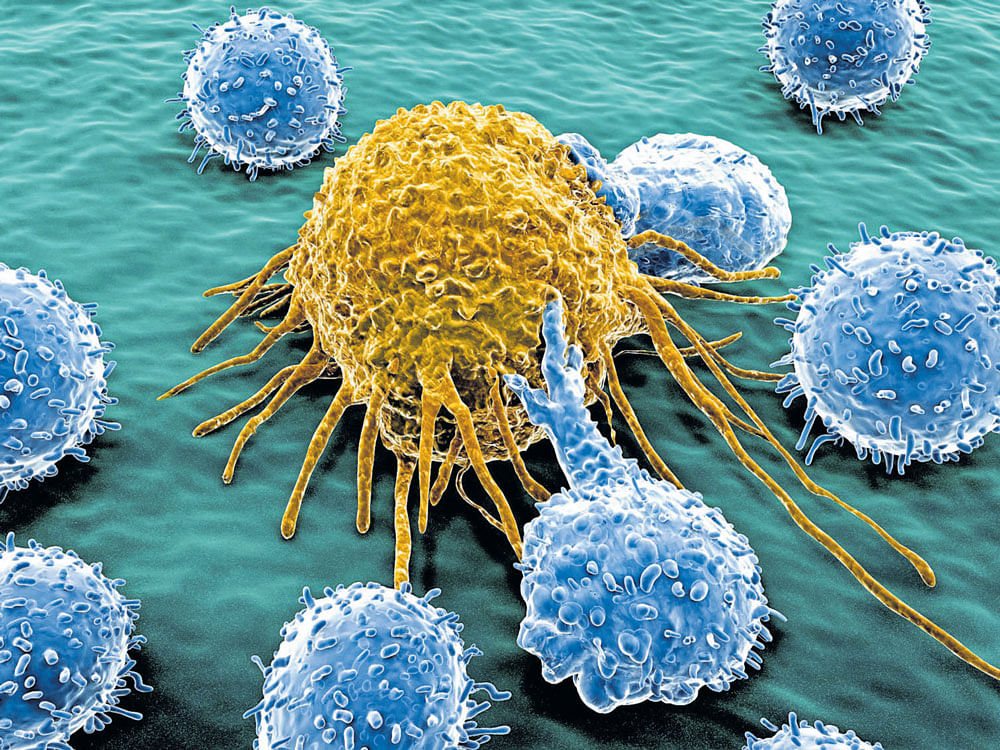The career of Union minister Ananth Kumar was cut short by cancer. Another chief minister is said to be battling with cancer as well. Suddenly, social media is abuzz with controversial theories regarding cancer and portray that cancer epidemics have shown a steep increase. Most of it is not true, here is why.
What is Cancer? Cancer is a group of diseases characterised by the excessive growth of abnormal cells, which if remains uncontrolled, can result in death. Several modifiable (therefore preventable) factors such as tobacco, infectious organisms, unhealthy diet and lack of physical activity can result in cancer. Few of the risk factors are internal such as inherited genetic mutations, hormonal imbalance, and immune conditions.
Life Expectancy and Cancers: The causes of death vary depending on the age group and whether health services are available, accessible and affordable. In the 1900s, an Indian new-born child might have survived until an approximate age of 23.8 years. This marginally improved to around 32 years around the 1950s.
Deaths due to infectious diseases continued to be the leading cause of death until the 1970s. Life expectancy dramatically increased to 69 due to the mass introduction of immunisation and antibiotics to combat infectious diseases. With each advance in the public health system, the surviving population lives longer and therefore, at higher risk of developing cancer among the elderly.
Increased age increases cancer susceptibility; it is merely due to the increase in altered cells and the environment within the cells that can give rise to cancer. While there is an increase in the number of stem cell divisions, the capacity of gene repair is also decreased. There is also a cumulative increase in the proportion of toxins from smoking, the effects of pollution, obesity etc.
What should India do? An increase in life expectancy at birth by 28 years in the past five decades (from 41 years in 1960 to 69 years now), has resulted in changes in the diseases affecting the population. From historical mentions of villages getting wiped out due to the plague, we are now witnessing higher deaths due to heart attacks or strokes in our surrounding.
Most Indians die from Cardio Vascular Diseases (CVDs). These include heart ailments and stroke causing 28% of all deaths in 2016. The advances in preventive cardiology will probably limit this proportion. With more years added to life in future, the cancer burden in our communities is only bound to increase. In developed countries, the lifetime risk of developing cancer has reached as high as 50%.
With one in eight men and one in 11 women dying of cancer, it has become a significant public health issue. Although the existing insurance mechanisms might provide some benefits; the coverage is barely sufficient for adequate cancer care.
The costs associated with cancer treatment are forbidden and out of reach for the common man. Strategies for early detection through enhanced screening services can prevent some cancers by allowing for the detection and removal of precancerous lesions.
Screening can also detect cancer early, before symptoms appear, which usually results in less extensive treatment and better outcomes. Through increased budget allocation to health, the central and state governments need to ensure that there is equity in screening for cancer across all the rural and remote areas. Strengthening the primary health centres in the country to actively engage in comprehensive, evidence-based cancer screening is the most critical first step.
Burden of new cases
Barring cervical cancer, the burden of new cases of cancer in all the states (except Mizoram) is lower than that comparable BRICS countries and much lower compared to developed countries. Also, the age-standardised incidence rate of cancer has remained the same in the last two decades.
This is hardly comforting as the breast cancer burden in India is increasing and we are far from having established efficient systems for screening, early detection and prevention. Thanks to significant improvements in the overall economic situation and health system reforms, most Indians will continue to live longer, and therefore cancer incidence is only going to increase.
While a complete cure is possible in just a few of the early detected cancers, most cancers can be prevented. Through preventive efforts, our society can strive to reduce or eliminate exposure to cancer-causing agents. These include tobacco use, malnutrition, physical inactivity, occupational exposures, and infections.
The highest value for the government’s investment in health will be from tackling these by effective tobacco control measures and in ensuring healthy body weight in Indians. Adopting a physically active, tobacco-free lifestyle combined with a healthy diet can prevent both CVDs and cancers.
Winning the battle against cancer is feasible if the culture of healthy lifestyle transforms from being a goal to be the norm in modern India.
(The writer has PhD from UCLA and works as Professor and Head – Lifecourse Epidemiology at IIPH, PHFI, Bengaluru)
